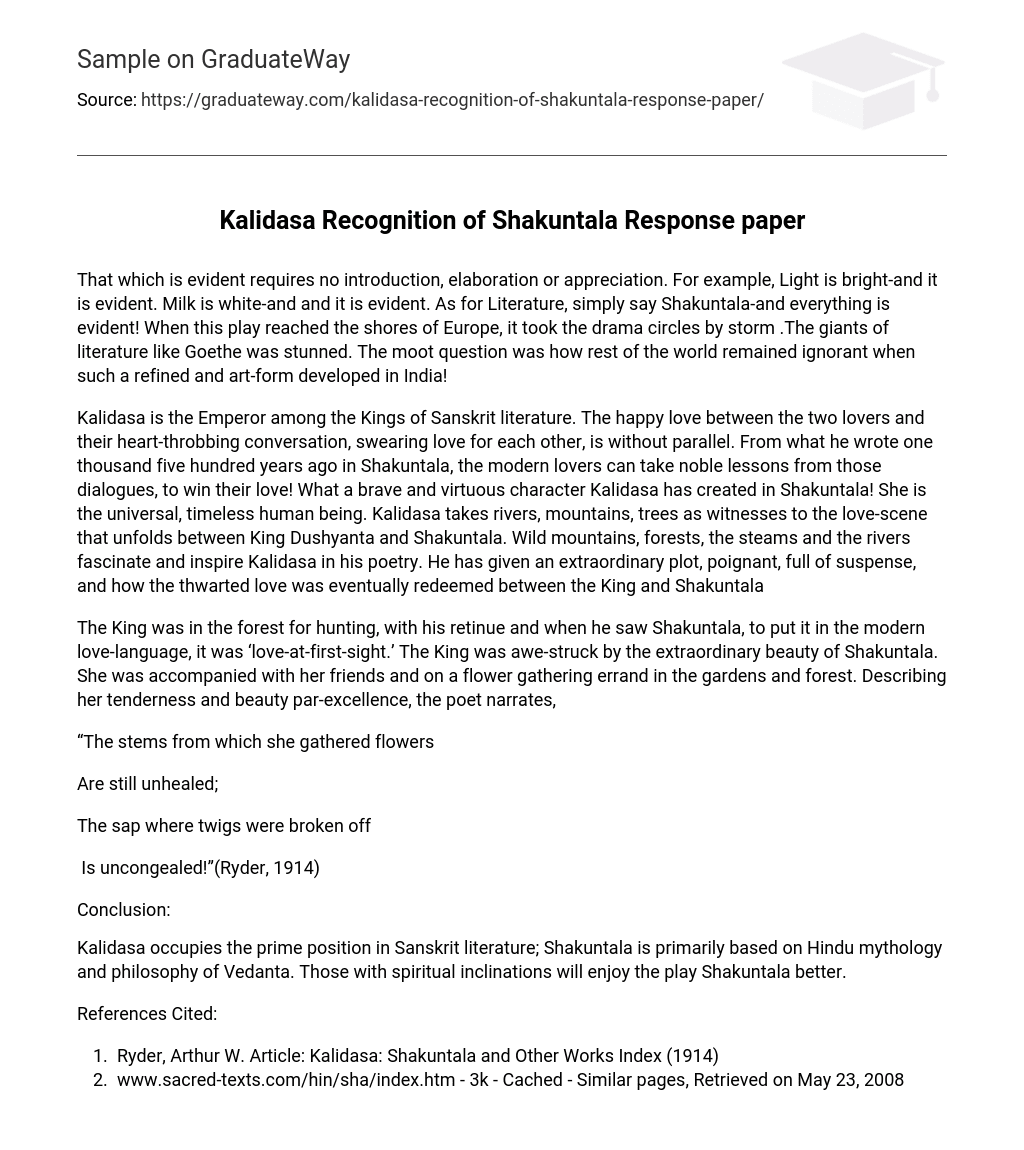That which is evident requires no introduction, elaboration or appreciation. For example, Light is bright-and it is evident. Milk is white-and and it is evident. As for Literature, simply say Shakuntala-and everything is evident! When this play reached the shores of Europe, it took the drama circles by storm .The giants of literature like Goethe was stunned. The moot question was how rest of the world remained ignorant when such a refined and art-form developed in India!
Kalidasa is the Emperor among the Kings of Sanskrit literature. The happy love between the two lovers and their heart-throbbing conversation, swearing love for each other, is without parallel. From what he wrote one thousand five hundred years ago in Shakuntala, the modern lovers can take noble lessons from those dialogues, to win their love! What a brave and virtuous character Kalidasa has created in Shakuntala! She is the universal, timeless human being. Kalidasa takes rivers, mountains, trees as witnesses to the love-scene that unfolds between King Dushyanta and Shakuntala. Wild mountains, forests, the steams and the rivers fascinate and inspire Kalidasa in his poetry. He has given an extraordinary plot, poignant, full of suspense, and how the thwarted love was eventually redeemed between the King and Shakuntala
The King was in the forest for hunting, with his retinue and when he saw Shakuntala, to put it in the modern love-language, it was ‘love-at-first-sight.’ The King was awe-struck by the extraordinary beauty of Shakuntala. She was accompanied with her friends and on a flower gathering errand in the gardens and forest. Describing her tenderness and beauty par-excellence, the poet narrates,
“The stems from which she gathered flowers
Are still unhealed;
The sap where twigs were broken off
Is uncongealed!”(Ryder, 1914)
Conclusion:
Kalidasa occupies the prime position in Sanskrit literature; Shakuntala is primarily based on Hindu mythology and philosophy of Vedanta. Those with spiritual inclinations will enjoy the play Shakuntala better.
References Cited:
- Ryder, Arthur W. Article: Kalidasa: Shakuntala and Other Works Index (1914)
- www.sacred-texts.com/hin/sha/index.htm – 3k – Cached – Similar pages, Retrieved on May 23, 2008





